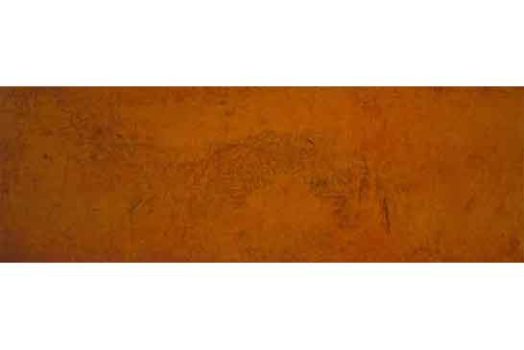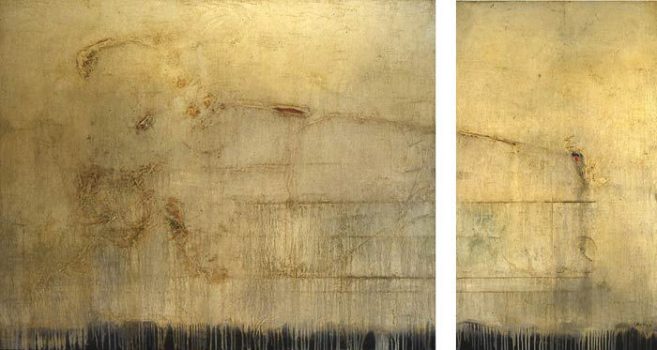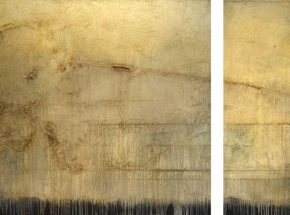

“A true symbol takes us to the center of the circle, not to another point on the circumference. It is by symbolism that man enters effectively and consciously into contact with his own deepest self….”
Thomas Merton
These works are living symbols of my struggle to perceive the Transcendent. The paintings themselves are symbols containing symbols pointing toward this effort. I look to create fields of action or archetypal landscapes in which this struggle takes place. This sacred space is the sphere in which sacrifice, redemption, suffering, ecstasy, obliteration and, ultimately, resurrection occur and effect transformations in our being. This symbolic space is inside us and outside us, it is cosmic and microcosmic; it is space itself.
I begin my paintings by taking found materials (twigs, leaves, string, etc.) and attaching them to the canvas as textural support to evoke an organic, naturally evolving, and perhaps chaotic environment. Cuts and slashes etched into the surface arise out of the suffering brought about by what I can only call the Ordeal of Transformation. The resulting composition, though brought about by a random and intuitive process, evolves out of a desire to give structure (i.e., intellectual rigor, Cartesian Duality, Euclidean rationality) to that experience, to codify it. We are pattern seekers and it is partly this drive that allows us to perceive radiance. It is a necessary though, perhaps, vain attempt to give meaning to an experience that is itself only and has no inherent meaning.
Ultimately, this is what non-representational painting is about for me: it has no inherent meaning. As in life, it is we who give meaning to it. What is important, for me, is the experience one has in relationship to the work, not necessarily from what the work arises or to what it might refer. These are works of aesthetic arrangement. They are meant to be experienced by the wholeness of our being, not merely interpreted by the mind.
Joseph Campbell wrote, “…the only true service of the proper artist today will have to be to individuals: reattuning them to forgotten archetypes…which have been lost.” Though the concept of archetypal themes is intellectual, the creation of the work itself is purely instinctual. The idea of instinct in fusion with intellect interests me. Synthesizing these two approaches, I hope to hold the viewer in some sort of aesthetic arrest and, in turn, hope the viewer experiences a deeper connection to that mystery we call being.





